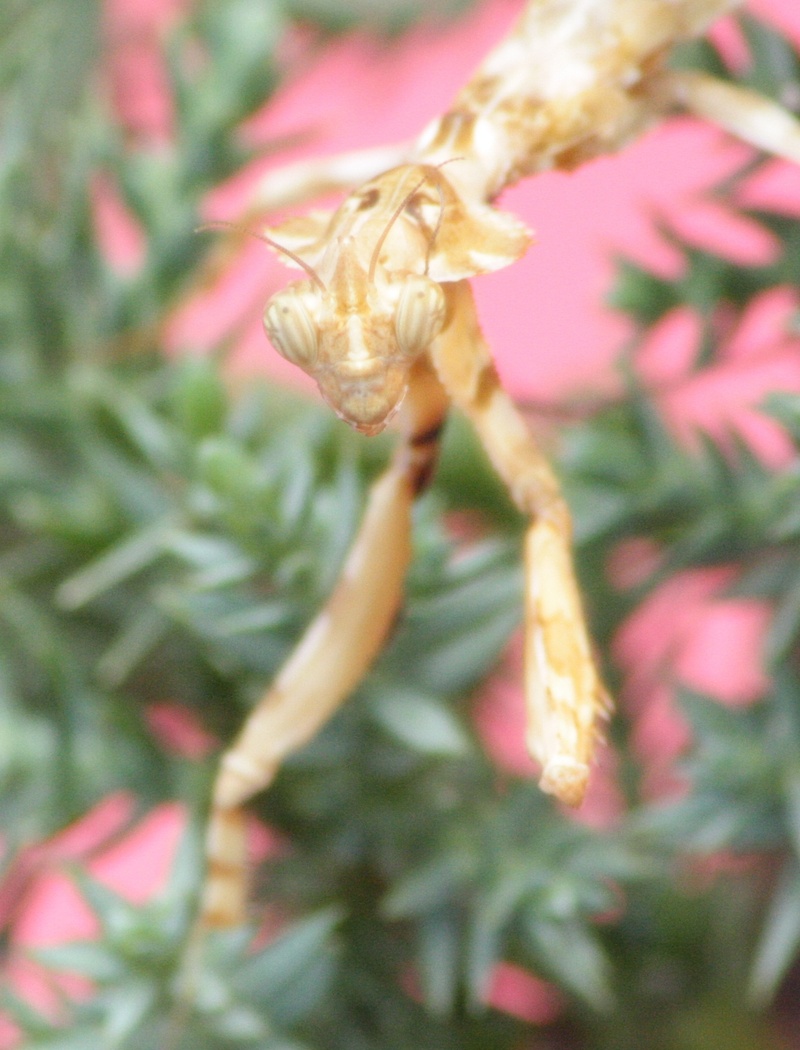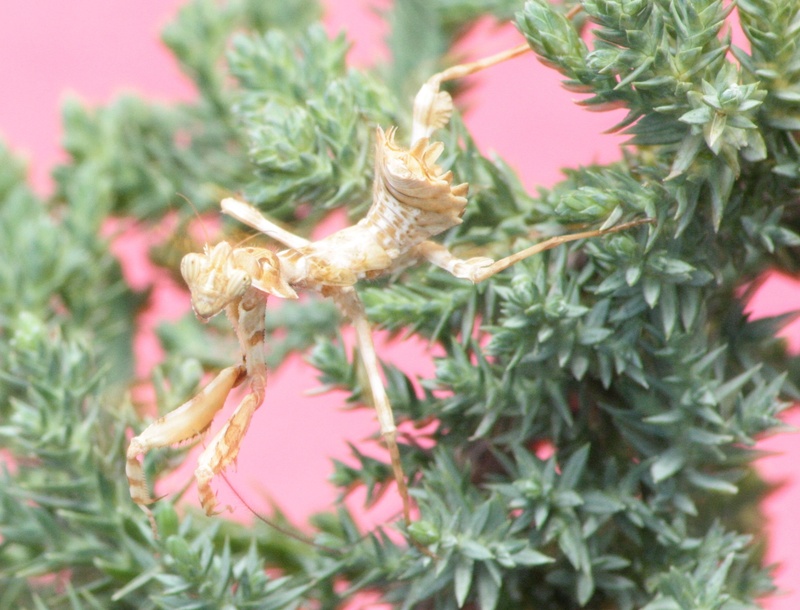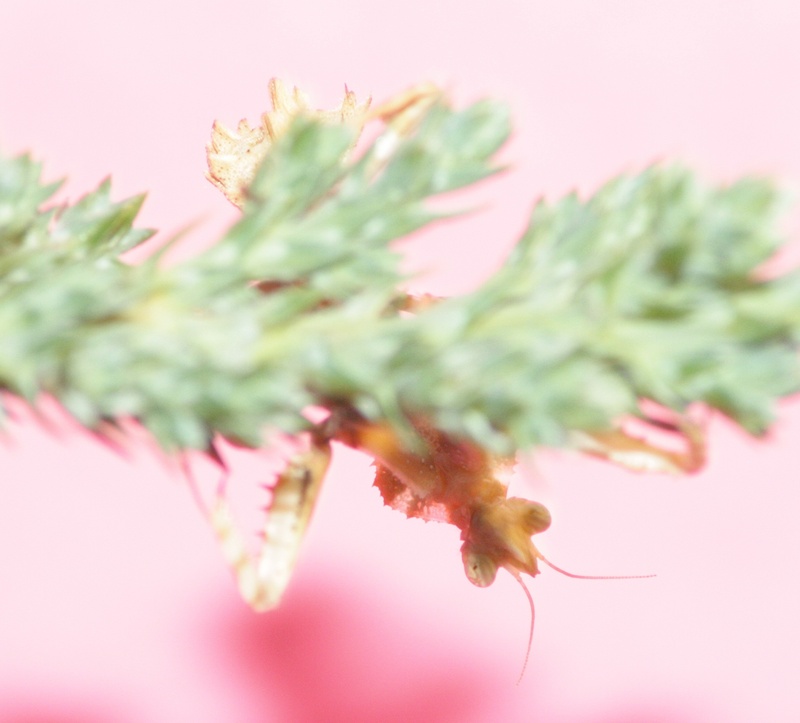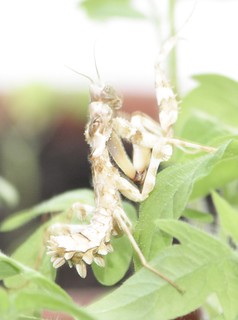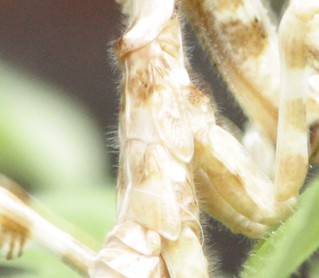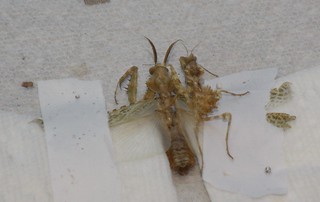If you end up with nymphs that fall too far behind in molts, it's best to separate them. That way they won't get eaten, and you can ensure they are getting enough food. You also may want to consider putting your sub adults in separate enclosures now to use as molting chambers so there is no chance of them getting knocked down during the final molt.
My sub adult female nymph that had turned green molted to an adult this morning! She looks good. She stayed green but her wings are a light green right now. Over the weekend, the first of my males molted to sub adult when I was out of town. I also have a sub adult female. The rest of my older stock are still smaller.
Alex, my nymph that turned green had first turned yellow/green. Perhaps yours is going to change to green.
I'm not exactly "loaded" with b mendica as I have continued to move some surplus stock. (I'm actually "loaded" with p wahlbergii nymphs nowadays.) Most of my surplus b mendica stock are L2 - L4 now. But I should have "fresh" males in the future in case you decide you'd like to re-mate your females down the line.
My sub adult female nymph that had turned green molted to an adult this morning! She looks good. She stayed green but her wings are a light green right now. Over the weekend, the first of my males molted to sub adult when I was out of town. I also have a sub adult female. The rest of my older stock are still smaller.
Alex, my nymph that turned green had first turned yellow/green. Perhaps yours is going to change to green.
I'm not exactly "loaded" with b mendica as I have continued to move some surplus stock. (I'm actually "loaded" with p wahlbergii nymphs nowadays.) Most of my surplus b mendica stock are L2 - L4 now. But I should have "fresh" males in the future in case you decide you'd like to re-mate your females down the line.




